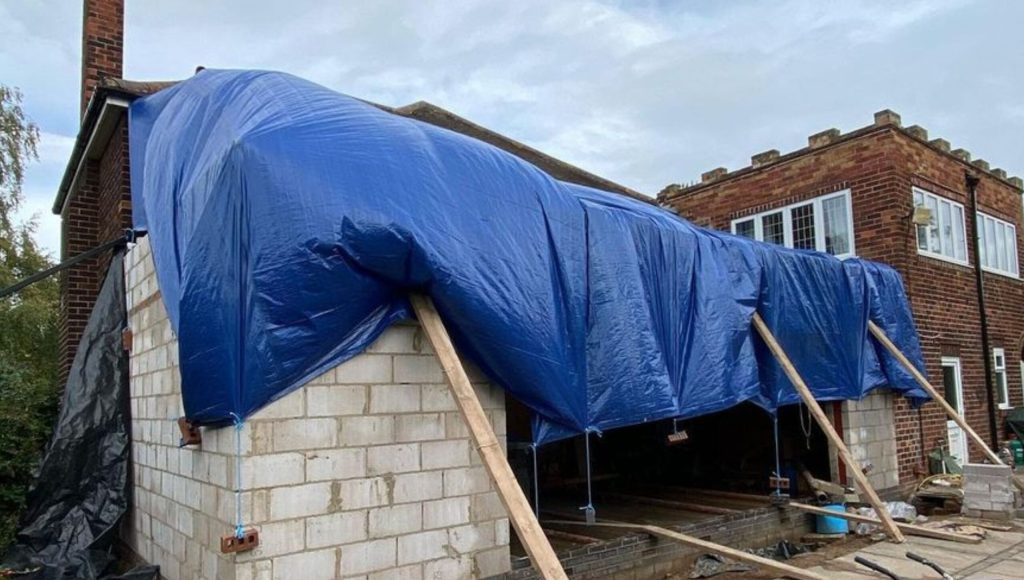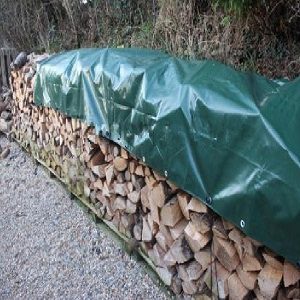These versatile sheets, typically made of waterproof and durable materials like polyethylene or canvas, have become an essential tool for countless individuals and businesses. In this blog, we will delve into the endless possibilities that tarpaulin sheets offer, exploring their wide range of applications and showcasing their importance in today’s world.
Protection against the Elements:
One of the primary use of tarpaulin sheets is providing protection against the elements. Whether it’s sheltering construction sites from rain or shielding outdoor equipment from harsh sunlight, tarps offer reliable protection against various weather conditions. Their waterproof nature ensures that objects underneath remain dry, making them indispensable in outdoor settings.
Construction and Renovation:
Tarpaulin sheets play a vital role in construction and renovation projects. They are used as temporary roofing, protecting structures from rain during the construction phase. Tarps are also employed to cover building materials and equipment, safeguarding them from dust and debris. Moreover, they act as privacy screens, preventing unauthorized access and protecting the privacy of workers on-site.

Transportation and Logistics:
In the transportation and logistics industry, tarpaulin sheets are extensively used to cover and secure cargo during transit. Flatbed trucks and trailers often utilize tarpaulin covers to shield goods from adverse weather conditions and potential damage caused by debris or exposure. These sheets can also be customized with logos and branding, providing a professional and unified look for businesses.
Agriculture and Farming:
Tarpaulin sheets are invaluable tools in the agricultural sector. Farmers utilize them for multiple purposes, including covering hay bales, protecting crops from extreme weather, and creating temporary animal shelters. Tarpaulins also serve as ground covers, preventing weed growth and reducing soil erosion, thereby enhancing crop yields.
Outdoor Events and Recreational Activities:
From music festivals to outdoor weddings, tarpaulin sheets are commonly employed to create temporary structures and protect event attendees from rain or excessive sunlight. Their versatility allows for the construction of tents, stages, and seating areas, providing a comfortable and protected environment for outdoor gatherings. Tarps also come in handy during camping trips, serving as ground covers, rainflys, or makeshift shelters.
DIY and Home Improvement:
Tarpaulin sheets are a DIY enthusiast’s best friend. Whether it’s protecting furniture during painting or creating a makeshift floor covering for messy projects, tarps offer a convenient and affordable solution. They can also be used as temporary covers for leaky roofs, broken windows, or damaged fences, providing immediate protection until permanent repairs are made.
Emergency Situations and Disaster Relief:
During emergencies and natural disasters, tarpaulin sheets become crucial resources for providing temporary shelter and protection. Relief organizations and government agencies distribute tarps to affected areas, allowing people to create temporary housing and cover damaged structures. These sheets offer a sense of security and privacy for individuals facing challenging circumstances.
Tarpaulin sheets are a versatile invention that has proven its worth in numerous industries and applications. From protecting against the elements to facilitating construction projects, transportation, agriculture, and even recreational activities, the possibilities are truly endless. Their durability, waterproof properties, and ease of use make them an indispensable tool in various scenarios. As technology advances and new materials are developed, we can expect tarps to evolve further, expanding their applications and contributing to a more resilient and adaptable world. So, let us embrace the versatility of tarpaulin sheets and continue exploring the boundless potential they offer.
How Tarpaulin sheets helps in emergency?
During times of emergencies and natural disasters, the need for immediate shelter, protection, and aid becomes paramount. In such challenging circumstances, tarpaulin sheets emerge as a lifeline, providing versatile solutions that address the urgent requirements of affected individuals and communities. In this blog, we will explore how tarpaulin sheets play a vital role in emergency situations and disaster relief efforts, offering shelter, protection, and hope to those in need.

Immediate Shelter Solutions:
In the aftermath of a disaster, when homes and infrastructure are destroyed or rendered uninhabitable, tarpaulin sheets serve as immediate shelter solutions. These lightweight and portable sheets can be easily transported to affected areas and quickly set up, providing temporary roofs and walls. They offer protection from the elements, providing a sense of security and privacy to individuals who have lost their homes.
Tarpaulins can be used to create makeshift shelters, both individually and in larger communal spaces. They can be stretched over poles or frames to form simple tents or used to cover damaged structures. In emergency camps, these sheets can be arranged to create separate living spaces, ensuring basic living conditions for displaced people.
Protection from Adverse Weather Conditions:
During emergencies, people are often exposed to harsh weather conditions, increasing the risk of illness and further damage to their already vulnerable state. Tarpaulin sheets serve as a barrier against rain, wind, and excessive sunlight, providing a protective shield for individuals seeking refuge.
In flood-prone areas, tarps can be used to cover rooftops or create elevated platforms, keeping inhabitants above water levels. In areas prone to storms and hurricanes, tarpaulins can be secured over windows and doors to protect against high winds and flying debris. These versatile sheets can also be used to cover damaged roofs or walls, preventing further water intrusion and structural deterioration.
Privacy and Dignity:
In emergency situations, maintaining privacy and dignity becomes essential, yet it can be challenging in crowded and chaotic environments. Tarpaulin sheets offer a means to create personal spaces and separate living areas, ensuring individuals and families have a semblance of privacy.
By utilizing tarpaulins to partition communal spaces, affected individuals can establish their own living areas within emergency camps. This not only helps preserve their privacy but also fosters a sense of normalcy and autonomy in otherwise difficult circumstances. Tarpaulin partitions also provide a degree of separation for different groups, such as families, ensuring a more organized and functional living environment.
Medical Facilities and Aid Stations:
In disaster-stricken areas, medical facilities and aid stations are often overwhelmed, undersupplied, or damaged. Tarpaulin sheets offer a versatile solution for setting up temporary medical facilities, triage centers, and distribution points for relief supplies.
Tarp-based medical tents can be quickly erected to provide essential healthcare services, including first aid, minor surgeries, and disease control. By using tarps as dividers, separate treatment areas can be established, maintaining privacy and preventing the spread of infections. Aid stations can also utilize tarpaulin sheets as makeshift roofs to shield supplies, medications, and equipment from the elements.
Transportation and Logistics:
Tarpaulin sheets also play a critical role in the transportation and logistics aspect of disaster relief efforts. They are used to cover and protect relief goods, ensuring that vital supplies such as food, water, and medical provisions remain dry and undamaged during transit.
Flatbed trucks and trailers carrying relief supplies often employ tarpaulin covers to shield the cargo from rain, dust, and other external elements. Tarpaulin covers can be secured tightly, preventing theft and unauthorized access to the goods while in transit or storage.